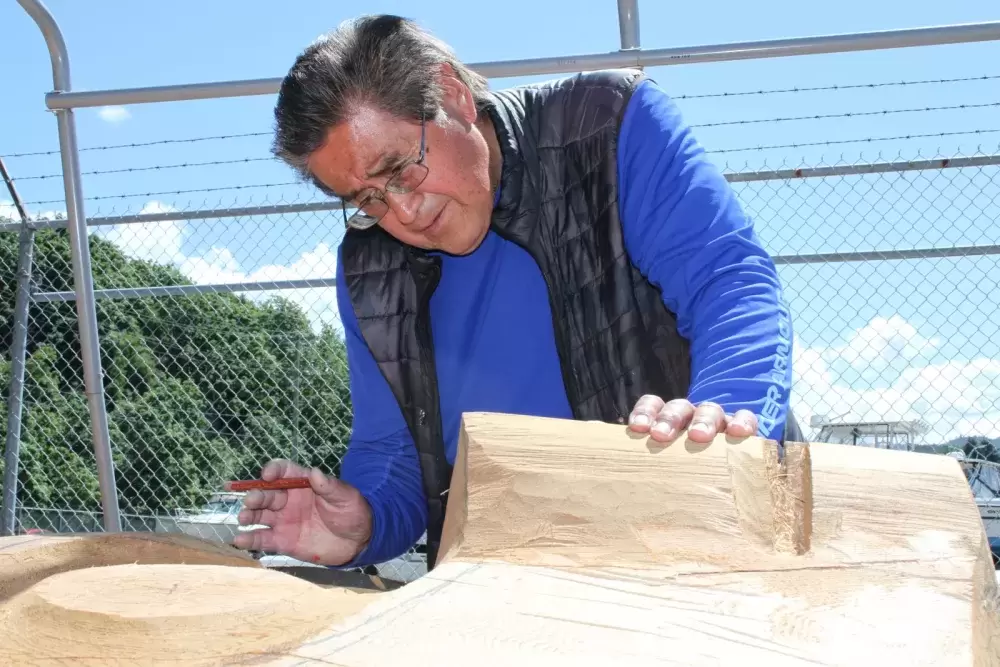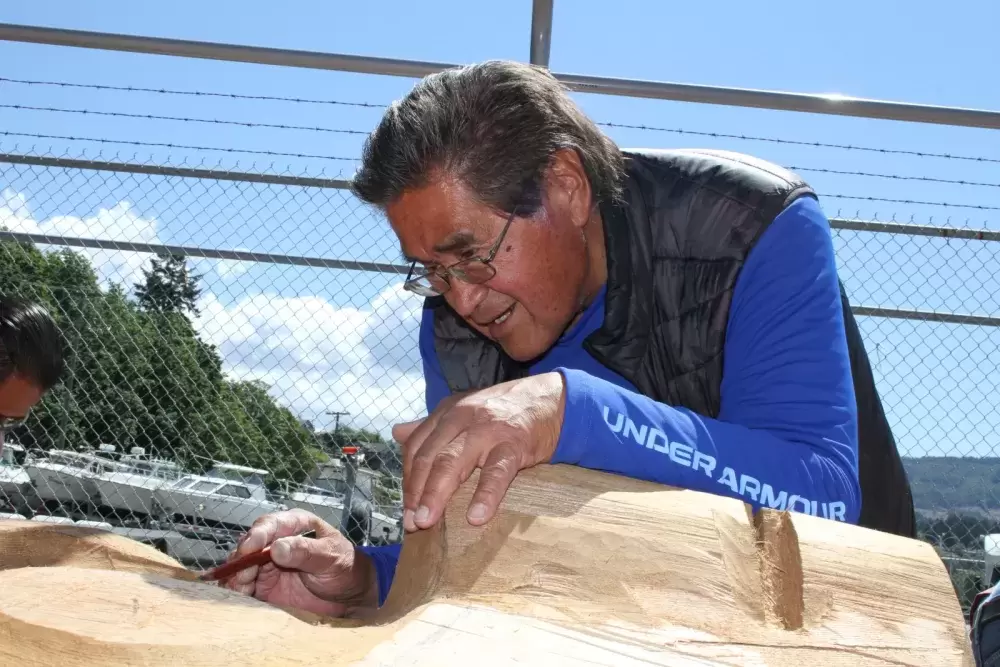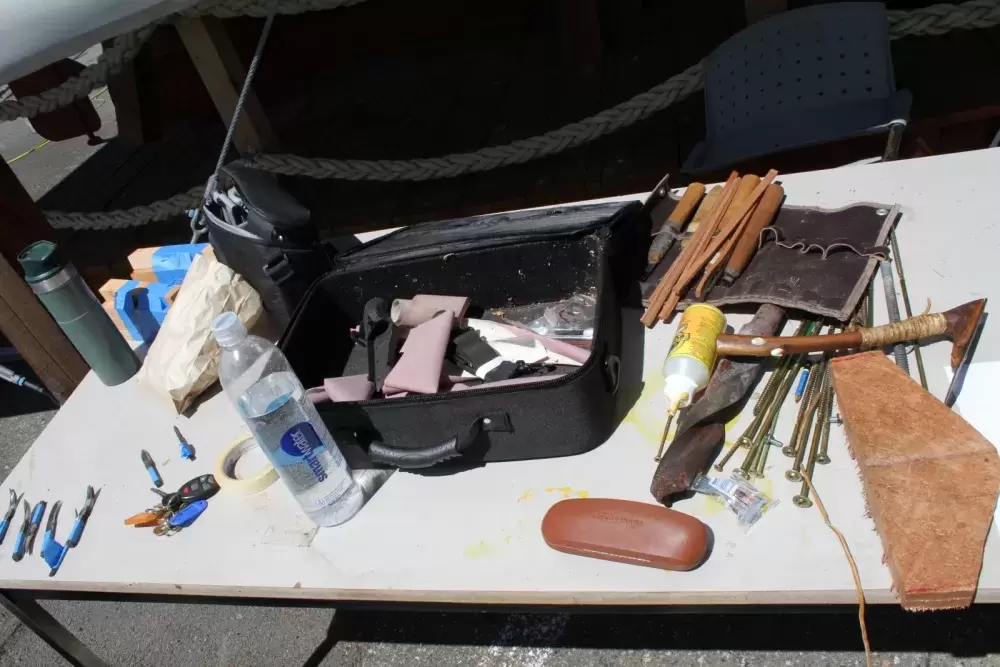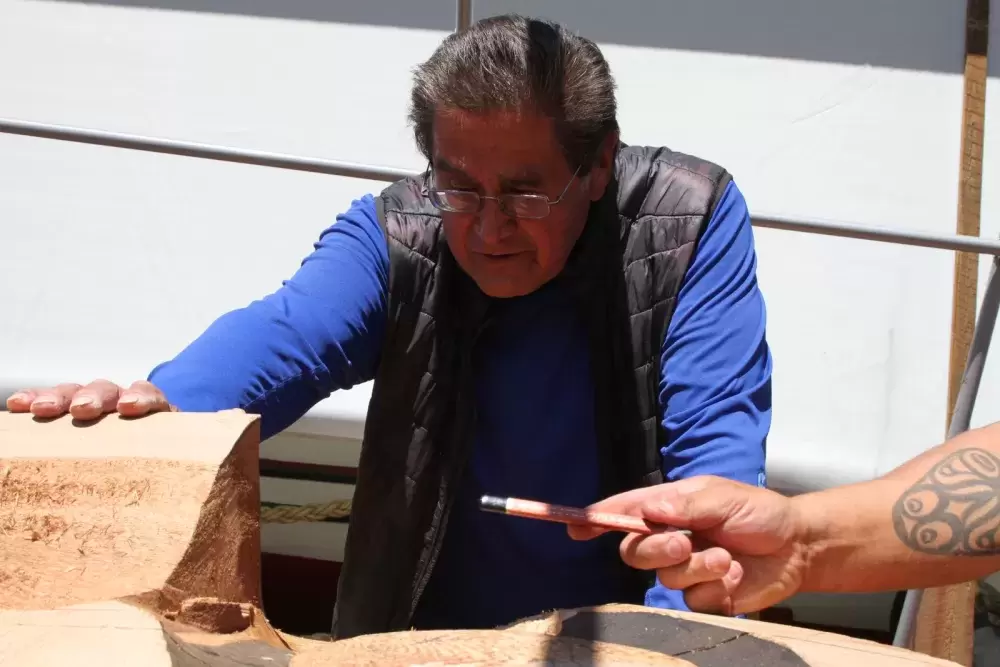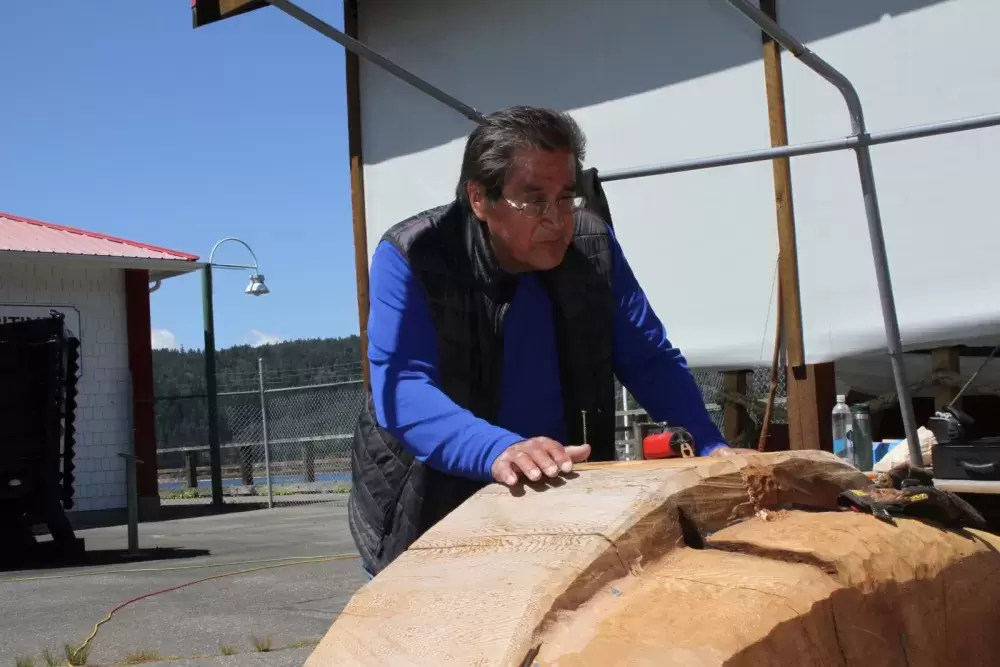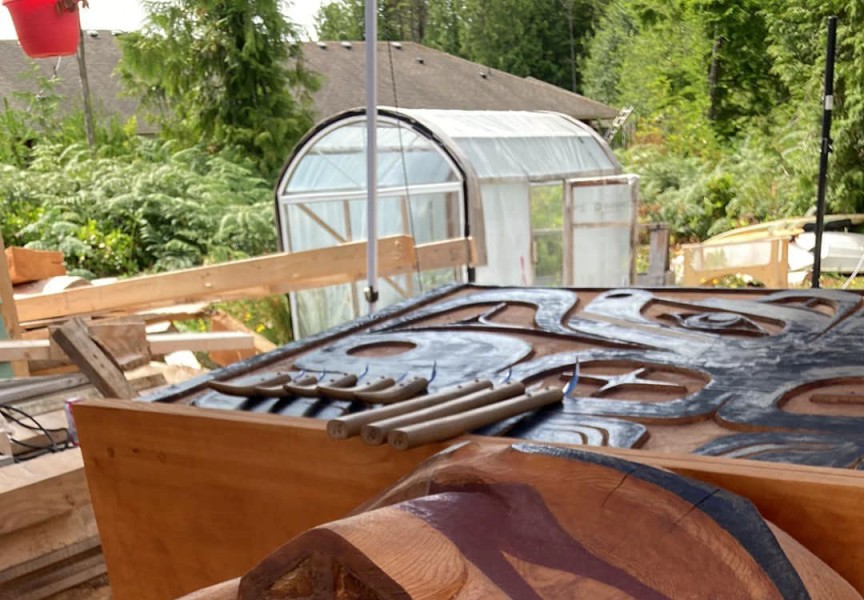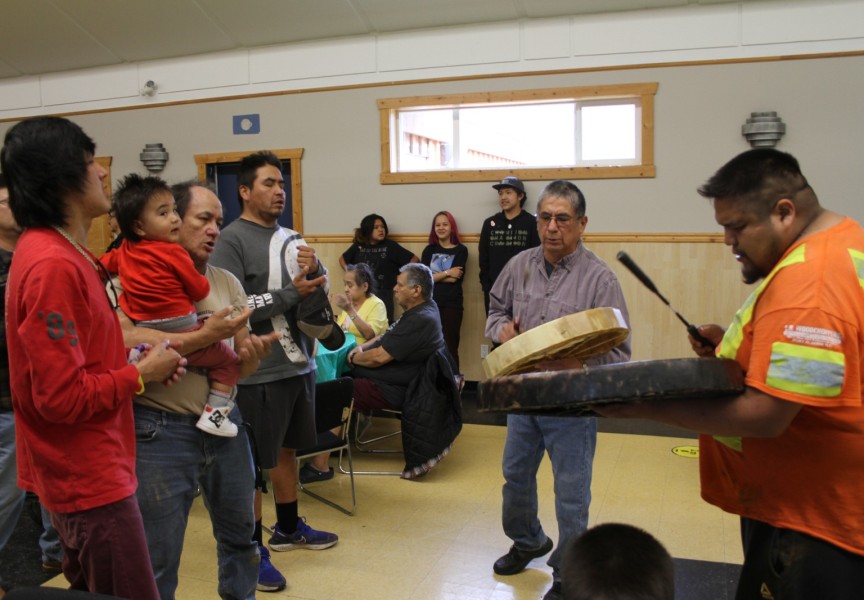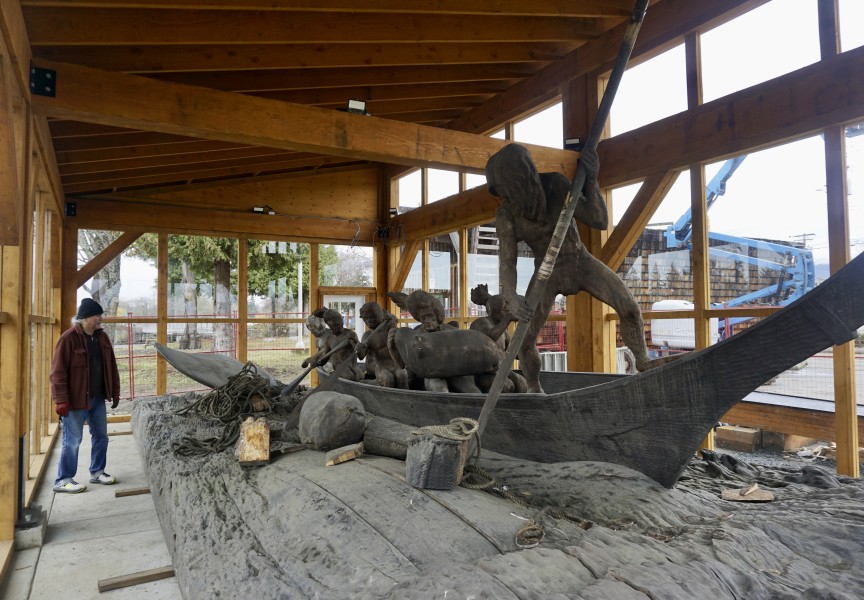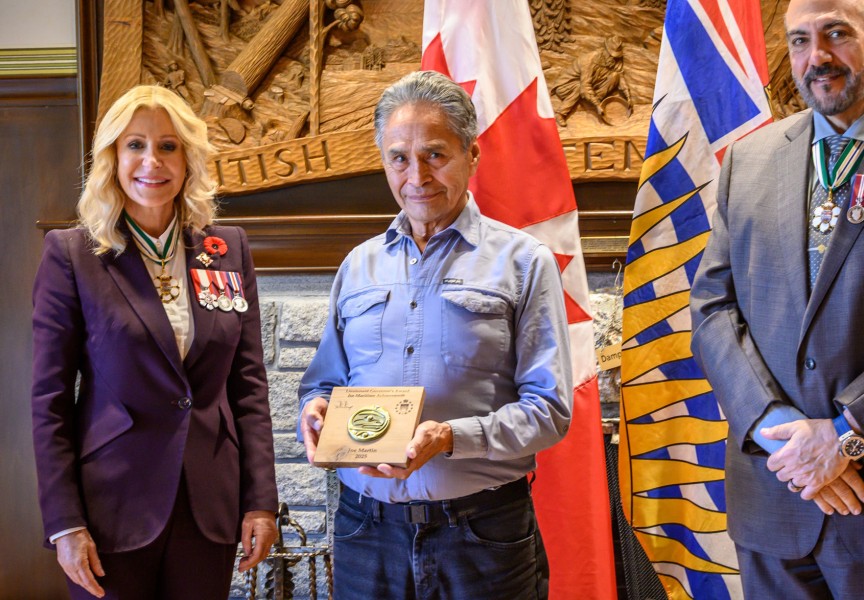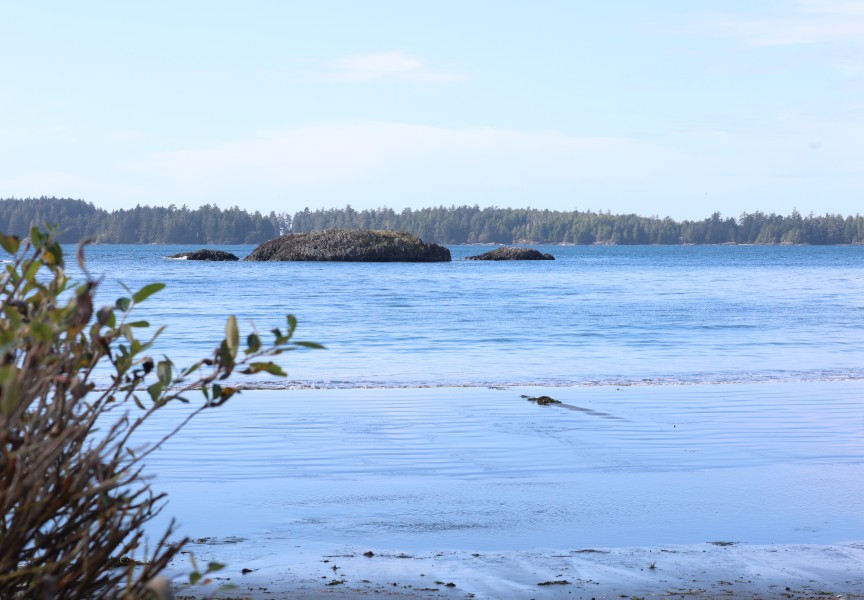From lying on the forest floor of Huu-ay-aht territory to standing 37 feet overlooking Port Alberni’s Victoria Quay, the multi-year journey of a totem pole realised by a Hesquiaht master carver is set to be complete with an unveiling on Sept. 18.
Plans have the totem pole being transported from its Harbour Quay carving location to a site near the Victoria Quay inside the entrance to the San Group property along the Somass River. The Tseshaht First Nation has extended an open invitation for the public to witness the unveiling of the pole in its territory on Saturday, Sept. 18 at 9 a.m.
Named n̓aasn̓aasʔaqsa, the pole was crafted to promote the advancement of Indigenous languages, but also dedicated to honouring women, according to its carver Tim Paul. The piece encompasses the 11 relatives of nature.
“What it addresses is the mountains and the Thunderbird, the skies, the rivers and the lakes. The clearcutting, the mining, the ocean, it just takes on everything and looks at the extraction of resources,” described the master carver as he worked on the project in June. “Nature is here and gives us everything we want.”
The project began when an 800-year-old cedar was transported to Port Alberni’s Harbour Quay in March 2019. Commissioned by the First Nations Education Foundation, the windfallen log was put under the care of Paul, who was tasked to carve a piece marking 2019 as the United Nations Year of Indigenous Languages.
Plans initially had the pole completed by the end of that year, when it would be raised at the University of Victoria. But by the summer of 2019 funds had dried up, leaving carvers to continue working on a volunteer basis.
Then in the fall Paul had to step away from the project after the passing of his long-time wife Monica, which was followed by the death of his mother three weeks later.
Other carvers continued working on the project, and by the end of the year most of the pole was painted, when the decision was made to keep the piece in Port Alberni.
Paul returned to the project in 2020, and with a team of Nuu-chah-nulth carvers decided to remove paint from the 11 relatives, which were re-formed to ensure proper alignment and avoid cracks in the log.
Then in the summer of 2021 the project received a $75,000 injection from the Canada Council for the Arts.
“All of that goes directly to the carvers,” said Scott Jeary, executive director of the First Nations Education Foundation.
The San Group, a West Coast-based forestry company with mills in Port Alberni, stepped in to provide a permanent location. The company plans to transport the pole on Sept. 16 with the help of a crane from Canadian Maritime Engineering.
Mike Ruttan of San’s media relations said the company is currently building a foundation for the totem pole, which will be lit at night. Its installation is planned for Sept. 17, the day before the unveiling.
“At about 6:45 in the morning, when the sun first comes over the mountains, it will placed on the foundation and set up, but covered with a shroud, because the ideal day is actually Saturday the 18th, and it has to do with where we are in the moon cycle,” explained Ruttan. “The whole process has been done in consultation between the master carvers and the Tseshaht.”
“It has to be placed in the right location, in the right way so that one of its eyes can see east, can see the rising sun in the morning,” added Ruttan.
Paul has received permission from Tseshaht hereditary chiefs for the pole’s installation by the Somass River, said the First Nation’s elected chief Ken Watts. The piece will stand on the former site of Noopsikupis, a historic Tseshaht village where people once lived by the river.
“Our chiefs, our council and our community agree: it was carved here, and it should stay here,” said Watts. “For the valley here, this isn’t just about raising a First Nations piece of art; it actually tells a story. Like many other poles, it has a name and it has a life of its own.”
Modern technology is also playing a role in telling the story of n̓aasn̓aasʔaqsa. QR codes, which open up information on smartphones and tablets, will be in place on plaques by the pole for people to learn about the project’s development and importance, explained Jeary.
“They’ll get all that information from the pole laying in the forest to its final resting place there,” he said.
“It’s an opportunity to show our culture at a high traffic area,” added Watts. “Tourists and others will be able to visit and read - not just about languages - but about women and other things that Tim wants to honour on the pole.”
Although it’s being raised two years after it was originally planned, Jeary stressed that the project has retained a vital connection to the United Nations.
“That’s where it all started, we wanted to get patronage from [Canadian Commission for] UNESCO,” he said, noting the importance of the project to First Nation’s culture and language revitalization. “We’ll continue to use that vehicle to promote globally.”
Nuu-chah-nulth songs have been composed to mark the pole’s raising on Sept. 18, a date when Watts expects that many in attendance will think of Willard Gallic, a fluent Tseshaht speaker who recently passed.
“I think for Tseshaht Willard Gallic is going to be on our minds for a long time,” said Watts. “He was one of our last remaining speakers. This is really, from our perspective, connected to what Tim originally started out this project as.”

